Fixing EMI Across the Board
advertisement
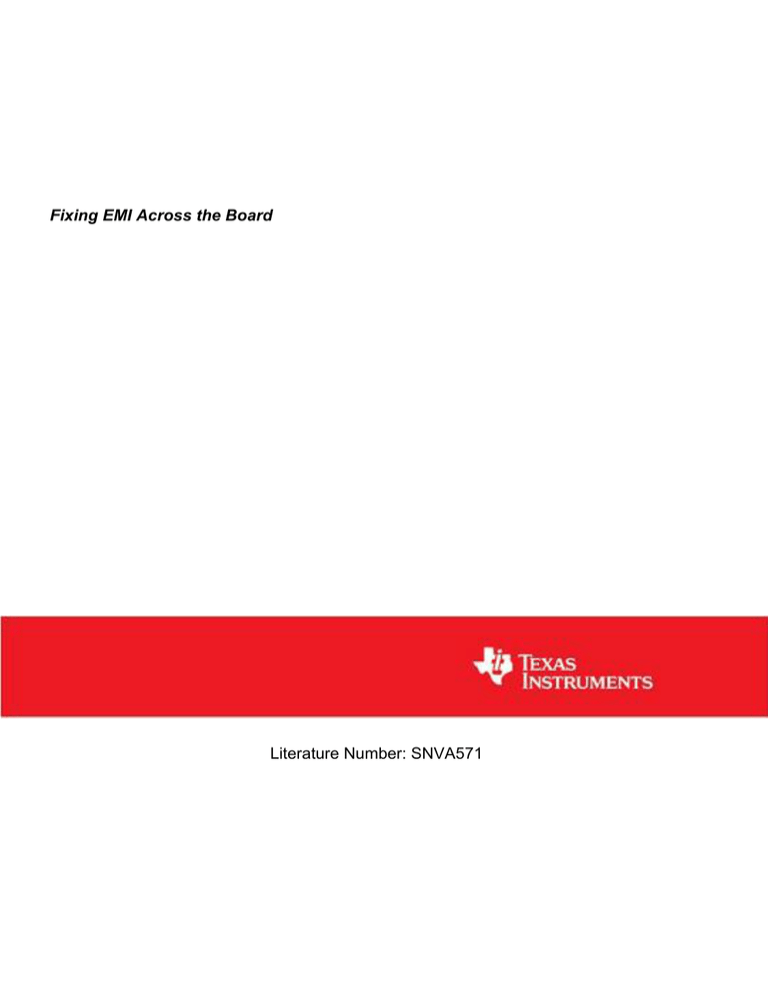
Fixing EMI Across the Board
Literature Number: SNVA571
Technology Edge
Fixing EMI Across the Board
By Sanjaya Maniktala, Principal Engineer, Power Management Group
An ounce (okay 2 ounces!) of prevention are always better than cure. So here we look at some of the practical design
aspects involved in controlling and testing EMI.
The Role of the Transformer in Radiated Emissions (EMI)
Very often an engineer resolves a stubborn EMI problem by just 'playing' with the transformer. The transformer comes into
the picture in the following ways
With its windings carrying high-frequency current, the transformer becomes an effective H-field antenna. These fields
can impinge upon nearby traces and cables, and enlist their help in getting transported out of the enclosure via
conduction or radiation.
As parts of the windings have a swinging voltage across them, they can also become effective E-field antennas.
The parasitic capacitance between the Primary and Secondary carries noise across the isolation boundary. Since the
Secondary side ground is usually connected to the chassis, this noise returns via the Earth plane, in the form of CM
noise. So we want to couple the Primary and Secondary very close to each other in order to reduce leakage inductance,
but this also increases their mutual capacitance, and thus the CM noise.
Here are some standard techniques that help prevent the above (see Figure 1)
In a safety-approved transformer, there are three layers of safety-approved polyester ('Mylar®') tape between the
Primary and Secondary windings, for example the popular #1298 from the 3M Company. In addition to these layers, a
copper 'Faraday shield' may be inserted to 'collect' the noise currents arriving at the isolation boundary, and diverting
them (usually to the Primary ground). Note that this shield should be a very thin piece of copper to avoid eddy current
losses and also to keep leakage inductance down. It is typically 2-4 mils thick, consisting of one turn wound around the
center limb. A wire is soldered close to its approximate geometric center and goes to the Primary ground. Note that the
ends of the copper shield should not be galvanically connected, as that would constitute a shorted turn as far as the
transformer is concerned. Some designs also use an additional Faraday shield on the Secondary side (after the 3 layers
of insulation), and that is connected to the Secondary ground. However, most commercial ITE power supply designs
don't need these shields, provided adequate thought has gone into the winding and construction, as we will discuss.
There is usually also a circumferential copper shield (or 'flux band') around the entire transformer. It serves primarily as
a radiation shield. It is often left floating in low cost designs, though it may be connected to the Secondary ground if
desired. If so connected, safety issues may need to be considered in regards to the requirement of reinforced insulation
between Primary and Secondary, and also the required Primary to Secondary 'creepages' (distance along the insulating
surface) and 'clearances' (shortest distance through air) as applicable. When the transformer uses an air gap on its
outer limbs, the fringing flux emanating from the gap causes severe eddy current losses in the band. So this band is
also usually only 2-4 mil thick. Note that the ends of this band can, and should be, soldered together, because this is an
outer shield, and can never constitute a shorted turn for the transformer. But like the Faraday shield, this too can be
omitted by good winding techniques.
From the point of view of EMI, a flyback transformer should be preferably center-gapped. i.e. no gap on its outer limbs.
The fringing fields from exposed air gaps become strong sources of radiated EMI besides causing significant eddy
current losses in the flux band.
There is usually an auxiliary winding present on the Primary side which provides a low voltage rail for the controller and
related circuitry. One end of it is connected to Primary ground. Therefore, it can actually double over as a crude Faraday
shield if we a) wind it spread out over the available bobbin width, and b) we help it collect and divert more noise by AC
coupling its opposite end (i.e. the diode end) to Primary ground, through a small 22pF-100pF ceramic capacitor as
shown in Figure 1. We don't need to draw any current from this 'Faraday winding'. So it need not even be used by the
circuitry. We could just wrap a few spaced-out turns of thin wire, with one end connected to Primary ground, and the
other end with the small 22pF cap to ground
Figure 1: Flyback Transformer of Low Noise Construction
Since the Drain of the Fet is swinging, it is a good idea to keep this end of the Primary winding buried as deep as
possible, i.e. it should be the first layer to be wound. The outer layers then tend to shield the field emanating from this.
The Drain end of this winding should definitely not be adjacent to the 'safety barrier' (the three layers of tape). Noise
current injected is proportional to the net dV/dt across the two 'plates' of the parasitic capacitor. Since we really cannot
reduce the capacitance much, without adversely impacting the leakage inductance, we should at least try to reduce the
net dV/dt across this capacitor.
Comparing the diagram on the left of Figure 1 with its schematic on the right, we see that the start and finish ends of
any winding have been indicated. In particular, the start ends have been shown with dots in the schematic. In a typical
production sequence, the coil winding machine always spins the bobbin in the same direction for every winding placed,
therefore a) all the start ends (dotted ends) are magnetically equivalent (so if one dotted end goes high, the other dots
also go high at the same moment, as compared to their opposite ends). We can also see that from the point of view of
actual physical proximity, every dotted end of a winding is close to the non-dotted end of the next winding.
This means that for the flyback transformer of Figure 1, the diode end of the Secondary winding will necessarily fall
adjacent to the safety barrier. Therefore, we have a very small dV/dt on the Primary side, though we have some dV/dt
on the Secondary side, and therefore a small net dV/dt across the barrier. But this dV/dt is much smaller than if the
Drain end of the Primary winding was adjacent to the safety barrier. The latter situation can be created by winding the
transformer the 'wrong' way, i.e. reversing all the start and finish ends shown in Figure 1). With that arrangement, we
would have a healthy dose of CM noise injected directly into the chassis/Earth.
The transformer in Figure 1 has the advantage that the quiet end (ground) of the Secondary is now the outermost layer.
That is by itself a good shield. So we may be able to drop the ubiquitous circumferential shield (copper band).
When we go through the same reasoning for a forward converter transformer, we will find that with the described
winding sequence, we will automatically have the quiet ends of both Primary and Secondary overlooking each other
across the safety barrier. This is good from the viewpoint of conducted EMI since very little noise will be injected through
the parasitic capacitance. But the outermost layer is not 'quiet' anymore, and we could have a radiation problem. In this
case, the circumferential shield becomes necessary.
A way out of this forward converter outer surface radiation problem is to ask our production to reverse the direction of
the Secondary winding (only). So for example, if till that point the machine was spinning clockwise, for the Secondary
we specify an anticlockwise direction. With this, the reasoning given above for the flyback will apply to the forward
converter transformer too. We would then have a quiet exterior (without a shield).
A forward converter transformer has no (or very small) air gap, so it is generally considered 'quieter' to start with. Also
by interleaving as per proximity effect analysis, we can significantly reduce the magnetomotive force that gives rise to
leakage flux and EMI
When the transistor is mounted on the chassis, there is a technique that is used to try and cancel the current injected
through the heatsink capacitance. This done by placing another winding, equivalent to the main winding and opposite in
phase (though it can be of much thinner wire). The idea is that if the noise current is being pushed out from the primary
winding, in the cancellation winding it gets pulled in. Therefore in effect the injected current does a quick U-turn back to
the source.
Rod inductors are often used in post-filtering LC stages on the output. Because of their open structure, they have been
called 'EMI cannons'. But they are still used because of their low cost and the low real estate they need. But they should
be placed vertically (as they normally are). If two such rods are being used on a given output, we should wind the two
rods identically, but reverse the current flow in one of them compared to the other by suitable modification of the PCB.
So looking from the top, one should be carrying current clockwise and the other anticlockwise. This helps redirect the
flux from one inductor straight into the other, so there is much less spilled around.
EMI from Diodes
We list some remaining things to know and try out
Diodes are a potent source of low to high-frequency noise. Slow diodes (like those in a typical input bridge) can also
contribute such noise.
For medium to high power converters, snubbers are usually placed across the ultrafast catch diode. Such diodes can be
selected to have softer reverse recovery characteristics to reduce EMI. Note that a Schottky diode has no reverse
recovery time in principle, but its body capacitance is relatively large and can end up resonating with trace inductances.
So an RC snubber is also helpful for them. If the layout is 'terrible', we will need snubbers even for very low power
converters.
If a diode has fully recovered (i.e. zero current) before the voltage across it starts to swing, there is no reverse recovery
current. This is true for any diode used in a (properly designed) RCD snubber or clamp. Therefore such diodes really
don't have to be 'super super fast'.
As compared to the diode turn-off (recovery) speed, the Fet turn-on should be 2 to 3 times slower. Otherwise the Fet will
force high current spikes through these yet unrecovered diodes. This will produce strong H-fields. Therefore it is not
uncommon to intentionally degrade the Fet switching speed by adding a resistor (say 10W to 100W) in series with the
gate (maybe with a diode across the resistor so as to leave the turn-off speed unaffected for efficiency reasons.
Small capacitors may be placed across the Fet (Drain to Source). But this can create a lot of dissipation in the Fet,
2
since every cycle the capacitor energy is dumped into the Fet. (P=1/2xCxV (f
).
SW
Fast diodes can also have very high forward voltage spikes at turn-on. So momentarily the diode forward voltage may
be 5 to 10V rather than the expected 1V or so. Usually, the snappier the reverse recovery, the worse is this forward
spike too. At Fet turn-off, the diodes become strong E-field sources, whereas at Fet turn-on, the diodes will generate
strong H-fields. Any small R-C snubber present across the diode essentially controls these forward voltage spike too.
In integrated switchers, access to the gate of the Fet may not be available. In that case, the turn-on can be slowed by
inserting a resistor of about 10W to 50W in series with the bootstrap capacitor. The bootstrap cap is in effect the voltage
source for the internal floating driver stage. At turn-on, it is asked to provide the high current spike required to charge up
the gate capacitance. So a resistor placed in series with this capacitor simply limits the charging current somewhat, and
thereby slows the turn-on.
Ferrite beads (of nickel-zinc type) are often placed in series with catch diodes, such as the output diode of a flyback.
These beads must be very small, as they can have a great effect on the power supply efficiency. Correctly chosen, the
good results obtained with regards to EMI and output ripple are well worth the 1-2% drop in efficiency.
A comment about split/sandwich windings. We often split windings for various reasons. In general series splitting works
fine. Putting windings in parallel is not always a good idea. For example, if the Secondary winding is split in parallel to
increase its current handling capability, since the two windings are usually physically apart on either side of the Primary
winding, they are actually magnetically slightly different. This can lead to a lot of ringing on the output and can also
affect the EMI spectrum. If this paralleling is really needed, it is better to use them as shown in Figure 2. Here the diode
forward drops help to 'ballast' the windings and thus they 'iron out' any inequality between the two halves.
Figure 2: Alternative Ways of Paralleling Secondary Windings
Layout guidelines
We should examine each topology carefully to figure out which PCB trace segments are 'critical'. Those traces in which
current is forced to either start flowing or stop flowing (suddenly) at the instant of turn-on or turn-off, will produce inductive
spikes. At each transition we get a very high dI/dt across this trace segment, and so from the thumb rule of '20nH per inch
of trace' we get a voltage spike as per V=LdI/dt. The areas of these high frequency current loops must be minimized. They
don't just produce EMI but can infiltrate into the control sections of integrated switchers causing erratic behavior.
We need to be careful about inadvertently making traces that have a swinging voltage on them too wide, as then they
become good E-field antennas. The prime example is the trace at the switching node of any topology. We may need to
increase its copper area for the purpose of lowering its inductance and/or helping dissipate heat from the Fet or catch
diode, but we must do this judiciously.
The ground plane is a very effective method of bringing down the overall level of the EMI emissions. On a multi-layer board,
if the very next plane to the side containing the power components and their associated traces is a ground plane, the EMI
can drop by 10-20 dB. This is clearly more cost-effective than opting for a 'cheap' one/two sided board, and having to use
bulky filters instead. However the integrity of such a ground plane should be maintained. Return currents tend to travel by
the shortest straight line path at low frequencies, but the higher harmonics tend to image themselves directly under the
forward trace on the opposite layer. Currents, given a chance, therefore automatically try to reduce the area they enclose,
as this lowers the self-inductance of the trace containing them, and thereby provides the current the lowest impedance
route. So if ill-considered cuts are made in the ground plane with the intention of 'conveniently' routing some other trace, the
return currents of the power converter stage (which really need this ground plane) will get diverted along the sides of the
intervening cuts, and in doing so, will form effective slot antennas.
Last-ditch Troubleshooting
It is helpful to separate the CM and DM components to be able to study them and debug a bad spectrum. The LISN reading
only provides a certain weighted sum of the total conducted noise, and therefore unless special accessories are available
(including a modified LISN), we can only guess which part of the EMI scan is mainly DM and which is CM. So we may not
know the root cause either. In Figure 3 we have shown two current probes, wired up in such a way that they are actually
performing 'simultaneous equation' math to separate the CM and DM components. By doing these two measurements at
the same time rather than one after another, we have also retained valuable information about the relative phase
relationship existing between the CM and DM components.
Figure 3: Math Algorithm Implementation for Separating CM and DM Components
IMPORTANT NOTICE
Texas Instruments Incorporated and its subsidiaries (TI) reserve the right to make corrections, modifications, enhancements, improvements,
and other changes to its products and services at any time and to discontinue any product or service without notice. Customers should
obtain the latest relevant information before placing orders and should verify that such information is current and complete. All products are
sold subject to TI’s terms and conditions of sale supplied at the time of order acknowledgment.
TI warrants performance of its hardware products to the specifications applicable at the time of sale in accordance with TI’s standard
warranty. Testing and other quality control techniques are used to the extent TI deems necessary to support this warranty. Except where
mandated by government requirements, testing of all parameters of each product is not necessarily performed.
TI assumes no liability for applications assistance or customer product design. Customers are responsible for their products and
applications using TI components. To minimize the risks associated with customer products and applications, customers should provide
adequate design and operating safeguards.
TI does not warrant or represent that any license, either express or implied, is granted under any TI patent right, copyright, mask work right,
or other TI intellectual property right relating to any combination, machine, or process in which TI products or services are used. Information
published by TI regarding third-party products or services does not constitute a license from TI to use such products or services or a
warranty or endorsement thereof. Use of such information may require a license from a third party under the patents or other intellectual
property of the third party, or a license from TI under the patents or other intellectual property of TI.
Reproduction of TI information in TI data books or data sheets is permissible only if reproduction is without alteration and is accompanied
by all associated warranties, conditions, limitations, and notices. Reproduction of this information with alteration is an unfair and deceptive
business practice. TI is not responsible or liable for such altered documentation. Information of third parties may be subject to additional
restrictions.
Resale of TI products or services with statements different from or beyond the parameters stated by TI for that product or service voids all
express and any implied warranties for the associated TI product or service and is an unfair and deceptive business practice. TI is not
responsible or liable for any such statements.
TI products are not authorized for use in safety-critical applications (such as life support) where a failure of the TI product would reasonably
be expected to cause severe personal injury or death, unless officers of the parties have executed an agreement specifically governing
such use. Buyers represent that they have all necessary expertise in the safety and regulatory ramifications of their applications, and
acknowledge and agree that they are solely responsible for all legal, regulatory and safety-related requirements concerning their products
and any use of TI products in such safety-critical applications, notwithstanding any applications-related information or support that may be
provided by TI. Further, Buyers must fully indemnify TI and its representatives against any damages arising out of the use of TI products in
such safety-critical applications.
TI products are neither designed nor intended for use in military/aerospace applications or environments unless the TI products are
specifically designated by TI as military-grade or "enhanced plastic." Only products designated by TI as military-grade meet military
specifications. Buyers acknowledge and agree that any such use of TI products which TI has not designated as military-grade is solely at
the Buyer's risk, and that they are solely responsible for compliance with all legal and regulatory requirements in connection with such use.
TI products are neither designed nor intended for use in automotive applications or environments unless the specific TI products are
designated by TI as compliant with ISO/TS 16949 requirements. Buyers acknowledge and agree that, if they use any non-designated
products in automotive applications, TI will not be responsible for any failure to meet such requirements.
Following are URLs where you can obtain information on other Texas Instruments products and application solutions:
Products
Applications
Audio
www.ti.com/audio
Communications and Telecom www.ti.com/communications
Amplifiers
amplifier.ti.com
Computers and Peripherals
www.ti.com/computers
Data Converters
dataconverter.ti.com
Consumer Electronics
www.ti.com/consumer-apps
DLP® Products
www.dlp.com
Energy and Lighting
www.ti.com/energy
DSP
dsp.ti.com
Industrial
www.ti.com/industrial
Clocks and Timers
www.ti.com/clocks
Medical
www.ti.com/medical
Interface
interface.ti.com
Security
www.ti.com/security
Logic
logic.ti.com
Space, Avionics and Defense
www.ti.com/space-avionics-defense
Power Mgmt
power.ti.com
Transportation and Automotive www.ti.com/automotive
Microcontrollers
microcontroller.ti.com
Video and Imaging
RFID
www.ti-rfid.com
OMAP Mobile Processors
www.ti.com/omap
Wireless Connectivity
www.ti.com/wirelessconnectivity
TI E2E Community Home Page
www.ti.com/video
e2e.ti.com
Mailing Address: Texas Instruments, Post Office Box 655303, Dallas, Texas 75265
Copyright © 2011, Texas Instruments Incorporated
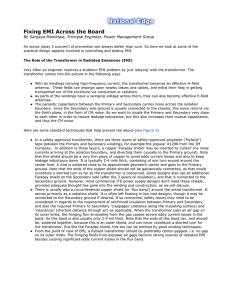
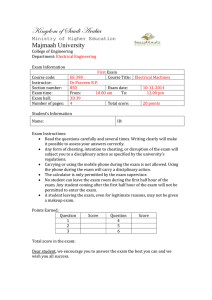
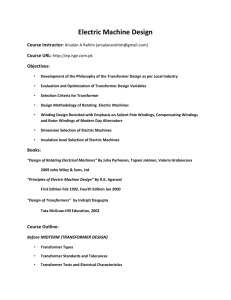
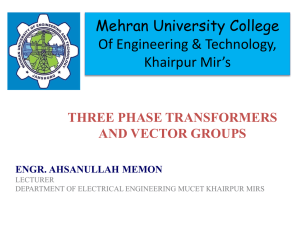
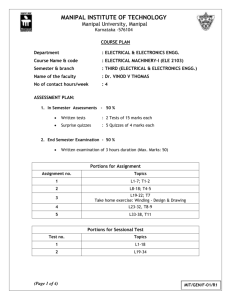
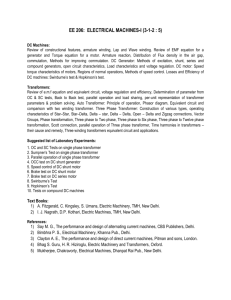
![FORM NO. 157 [See rule 331] COMPANIES ACT. 1956 Members](http://s3.studylib.net/store/data/008659599_1-2c9a22f370f2c285423bce1fc3cf3305-300x300.png)